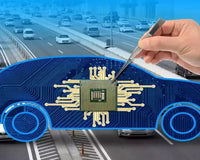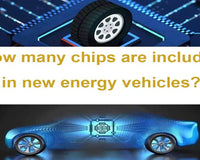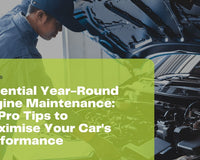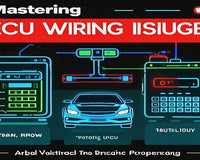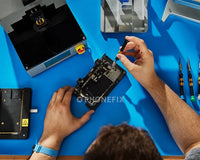If you drive a diesel vehicle, you’ve probably noticed the array of warning lights on your dashboard, but few are as stressful as the DPF indicator light. One minute you’re cruising, the next that little light pops on, and you’re left wondering: Can I keep driving? Will I damage my car? 
What Even Is a DPF?
DPF is a device designed to remove diesel particulate matter from the exhaust gas of a diesel engine designed to trap harmful soot and particulate matter before they’re released into the air. Over time, this soot builds up in the filter, and your vehicle needs to clean it out through a process called regeneration. Sometimes, you can be turned off the DPF with the help of ECU MASTER TOOL.
In addition, ECUHELP KT200II programmer can reading data to perform DTC code removal, EGR and DPF removal, etc.
Can You Keep Driving When the DPF Light Is On?
The DPF light exists to tell you two things, your vehicle needs to perform a regeneration, and DPF is clogged or malfunctioning.
Scenario 1: The Light Just Came On (No Flashing, No Other Warnings).
If the DPF light is solid not flashing and you haven’t noticed any other issues, such as reduced power, strange noises, or smoke, you can continue driving, but you need to adjust your route to help the DPF regenerate.
Avoid short trips idle excessively. This can be done by driving at a consistent speed of at least 40 mph for approximately 10 minutes. This higher sustained speed increases the exhaust temperature, which can often trigger a DPF regeneration. In most cases, the DPF light will turn off on its own once regeneration is complete.
Scenario 2: The Light Is Flashing, Solid for Days, or Accompanied by Other Warnings.
A flashing or persistent DPF light means, the filter is severely clogged, and regeneration isn’t working. If the DPF light is flashing, even after trying highway driving, or is paired with warnings like DPF Full or Reduced Power, do NOT keep driving. Please contact a repair technician. They will use XTOOL D9SPRO professional diagnostic tools to check for blockages, sensor issues, or component failures.
What happens if you ignore it?
Reduced fuel efficiency: A clogged DPF restricts exhaust flow, forcing the engine to work harder and burn more fuel.
Engine damage: Excess backpressure from a clogged filter can damage the turbocharger, EGR valve, or even the engine itself over time.
Costly repairs: A severely clogged DPF may need to be professionally cleaned or replaced.
The DPF light is a warning and ignoring it could lead to bigger problems, stop delaying and get it checked out. However, the best way to avoid DPF headaches is to prevent clogs in the first place, use high-quality diesel fuel, avoid frequent short trips and regular oil changes and filter checks help keep the DPF and engine in good shape.
Taking care of your DPF now will save you time, money, and frustration down the road.
Can You Keep Driving When the DPF Indicator Light Comes On?


